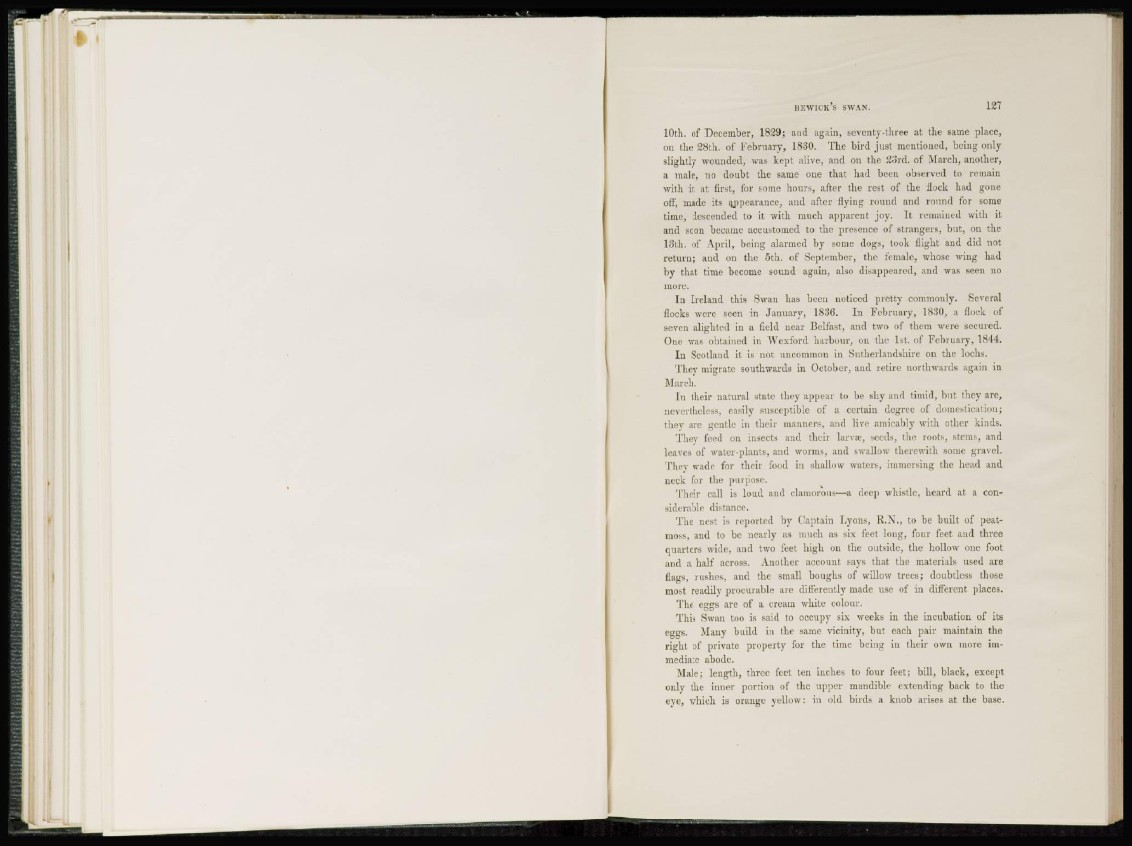
10th. of December, 1829; and again, seventy-three at the same place,
on the 28th. of February, 1830. The bird just mentioned, being only
slightly wounded, was kept alive, and on the 23rd. of March, another,
a male, no doubt the same one that had been observed to remain
with it at first, for some hours, after the rest of the flock had gone
off, made its appearance, and after flying round and round for some
time, descended to it with much apparent joy. It remained with it
and soon became accustomed to the presence of strangers, but, on the
13th. of April, being alarmed by some dogs, took flight and did not
return; and on the 5th. of September, the female, whose wing had
by that time become sound again, also disappeared, and was seen no
more.
I n Ireland this Swan has been noticed pretty commonly. Several
flocks were seen in January, 1836. In February, 1830, a flock of
seven alighted in a field near Belfast, and two of them were secured.
One was obtained in Wexford harbour, on the 1st. of February, 1844.
I n Scotland it is not uncommon in Sutherlandshire on the lochs.
They migrate southwards in October, and retire northwards again in
March.
In their natural state they appear to be shy and timid, but they are,
nevertheless, easily susceptible of a certain degree of domestication;
they arc gentle in their maimers, and live amicably with other kinds.
They feed on insects and their larvre, seeds, the roots, stems, and
leaves of water-plants, and worms, and swallow therewith some gravel.
Thev wade for their food in shallow waters, immersing the head and
neck for the purpose.
Their call is loud and clamorous—a deep whistle, heard at a considerable
distance.
The nest is reported by Captain Lyons, R.N., to be built of peatmoss,
and to be nearly as much as six feet long, four feet and three
quarters wide, and two feet high on the outside, the hollow one foot
and a half across. Another account says that the materials used are
flags, rushes, and the small boughs of willow trees; doubtless those
most readily procurable are differently made use of in different places.
The eggs are of a cream white colour.
This Swan too is said to occupy six weeks in the incubation of its
eggs. Many build in the same vicinity, but each jjair maintain the
right of private property for the time being in their own more immediate
abode.
Male; length, three feet ten inches to four feet; bill, black, except
only the inner portion of the upper mandible extending back to the
eye, which is orange yellow: hi old birds a knob arises at the base.